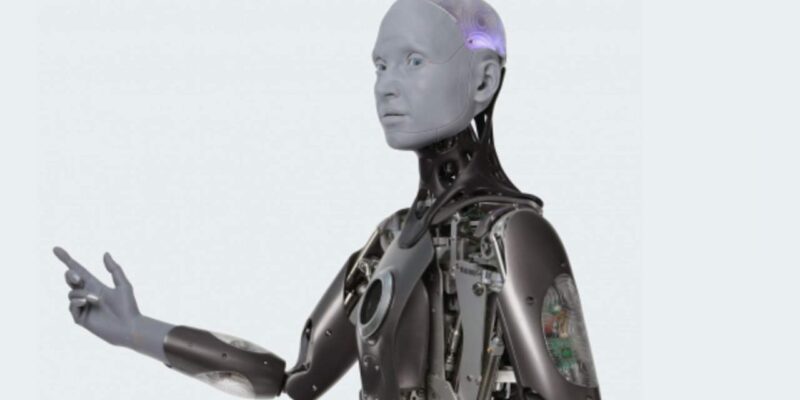Artificial intelligence, or AI, is one of the most fat areas of exploration in several fields. AI has vast eventuality to ameliorate drug and numerous other fields of exploration. Generally, an AI lives inside a computer system constrained inside the digital realm. Still, a company called Engineered Trades has developed what it calls an AB, or artificial body, that will give an AI a physical place to live.
The Ameca creatural robot is designed to work with humans and give relatable natural mortal gestures. It’s designed with upgradeable modular mechanics and can be controlled via a pall- managed API dev tackle. The company says its robot has base-breaking advances in movement and natural gestures, intelligent commerce and provides a future- evidence software system. Engineered Trades also says that its API offers customization pathways that were n’t available preliminarily The company plans to show off its robot at CES 2022 in Las Vegas, which will protest off beforehand coming time. The robot is designed to benon-threatening and general neutral. Ameca is designed to support the testing and development of artificial intelligence and machine literacy systems alongside the company’s Tritium robot operating system. The factual robot tackle stems from the company’s Mesmer technology, which was developed to display a vast range of mortal feelings. Mesmer robots were designed and erected using 3D reviews of real people allowing them to imitate mortal bone structure, skin texture, and expressions.
One of the crucial designs for the robot tackle is a modular armature. The modular armature means the robot can be upgraded as technology is enhanced rather than having to be fully replaced. Both physical tackle and software can be streamlined without copping a new robot.
The entire robot system was designed to be pall- connected, give possessors or drivers with access to all robot data, and allow it to be controlled from anywhere in the world. Ameca’s tackle provides naturalistic stir and advanced facial expression capability. When humans communicate, we do so with further than words, with important of our communication made through body language and facial expression. Without these pointers, it can be delicate for an individual to interpret intent.
While the robot is creatural, it’s not suitable to walk. Engineered Trades says that significant hurdles have to be overcome to allow the robot to walk, but it has been probing that. So far, it’s been unfit to produce a completely walking creatural robot. Still, one of the benefits of the modular design is when the technology to allow the robot to walk is developed, robots can be upgraded.
The company says the main purpose of Ameca is as a platform for developing artificial intelligence. The company is substantially concentrated on developing robotic tackle and says that it’s leaving experimenters working with its platform to produce artificial intelligence and machine literacy algorithms for their tackle. Since the robot is pall- connected, if commodity goes wrong, masterminds can ever connect to it to diagnose problems, and frequently problems can be fixed ever.
Research into AI is ongoing, and platforms like Ameca give the occasion for commerce beyond a computer terminal with commodity more mortal-like. There are numerous operations for artificial intelligence in multiple fields of exploration.
What differently can AI do?
Artificial intelligence has been used to help decrypt ancient calligraphies, similar as the Vonyich handwriting written in the 15th century. Mortal experimenters have tried to decrypt the handwriting for times, but no bone was sure what language it was written in. Experimenters turned to AI and natural language processing to compare the handwriting to samples from 400 languages.
They discovered that while firstly the handwriting was believed to have been written in Arabic, it was actually Hebrew. The platoon discovered 80 percent of the words in the handwriting were in a Hebrew wordbook. Interestingly, while Hebrew scholars couldn’t read the textbook, Google Translate did a unexpectedly good job of rephrasing a judgment.
Artificial intelligence is also used heavily in medical exploration. One of the biggest challenges facing drug moment is so- called “ superbugs” resistant to antibiotics. Significant exploration sweats are being put into designing new antibiotics to treat these superbugs. Experimenters at MIT leveraged machine- learning algorithms to discover a emulsion suitable to destroy several antibiotic-resistant superbugs.
One of the superbugs the emulsion was suitable to destroy is resistant to all available antibiotics. The AI used in this case was given a library of over 100 million chemical composites. It was suitable to sort through those composites to design substances that could destroy multiple superbugs. AI’s can sort through massive quantities of data much briskly than humans, significantly syncopating exploration time
.















![How to solve [pii_email_af9655d452e4f8805ebf] Error?](https://themediahubs.com/wp-content/uploads/2023/02/U9rr3rhWhUvxCSyrdw3r5MZLGTsfOGbJeliDmntx-1-1-400x225.jpg)



![How to solve [pii_email_af9655d452e4f8805ebf] Error?](https://themediahubs.com/wp-content/uploads/2023/02/U9rr3rhWhUvxCSyrdw3r5MZLGTsfOGbJeliDmntx-1-1-180x180.jpg)
Comments